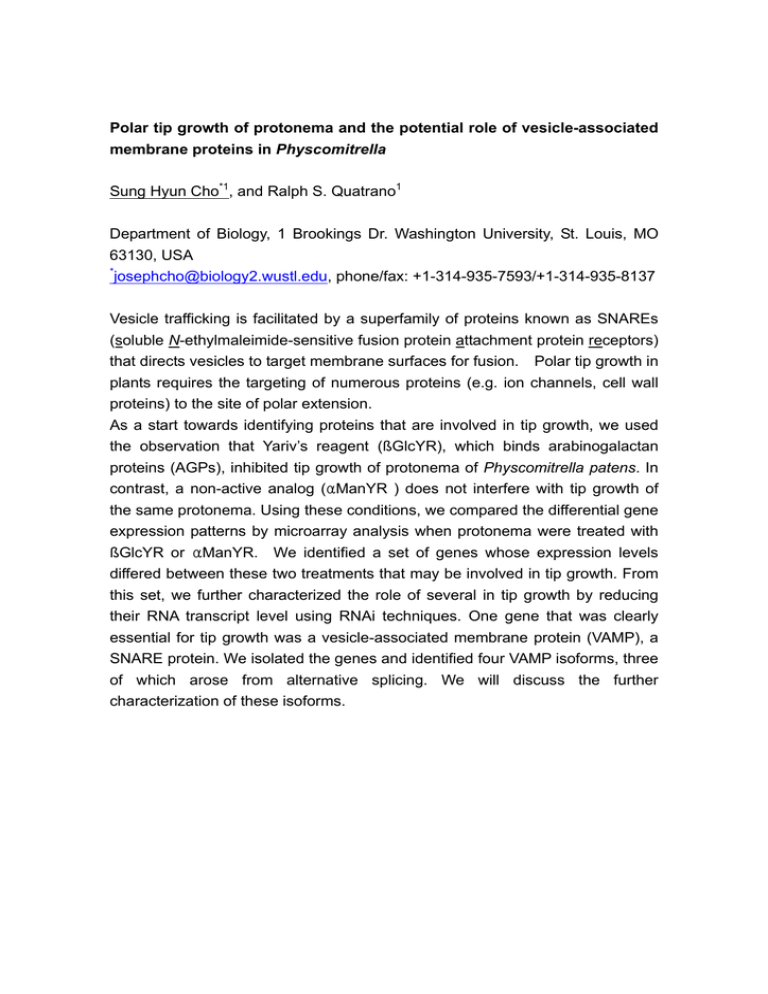Polar tip growth of protonema and the potential role of... Physcomitrella Sung Hyun Cho
advertisement

Polar tip growth of protonema and the potential role of vesicle-associated membrane proteins in Physcomitrella Sung Hyun Cho*1, and Ralph S. Quatrano1 Department of Biology, 1 Brookings Dr. Washington University, St. Louis, MO 63130, USA * josephcho@biology2.wustl.edu, phone/fax: +1-314-935-7593/+1-314-935-8137 Vesicle trafficking is facilitated by a superfamily of proteins known as SNAREs (soluble N-ethylmaleimide-sensitive fusion protein attachment protein receptors) that directs vesicles to target membrane surfaces for fusion. Polar tip growth in plants requires the targeting of numerous proteins (e.g. ion channels, cell wall proteins) to the site of polar extension. As a start towards identifying proteins that are involved in tip growth, we used the observation that Yariv’s reagent (ßGlcYR), which binds arabinogalactan proteins (AGPs), inhibited tip growth of protonema of Physcomitrella patens. In contrast, a non-active analog (αManYR ) does not interfere with tip growth of the same protonema. Using these conditions, we compared the differential gene expression patterns by microarray analysis when protonema were treated with ßGlcYR or αManYR. We identified a set of genes whose expression levels differed between these two treatments that may be involved in tip growth. From this set, we further characterized the role of several in tip growth by reducing their RNA transcript level using RNAi techniques. One gene that was clearly essential for tip growth was a vesicle-associated membrane protein (VAMP), a SNARE protein. We isolated the genes and identified four VAMP isoforms, three of which arose from alternative splicing. We will discuss the further characterization of these isoforms.





